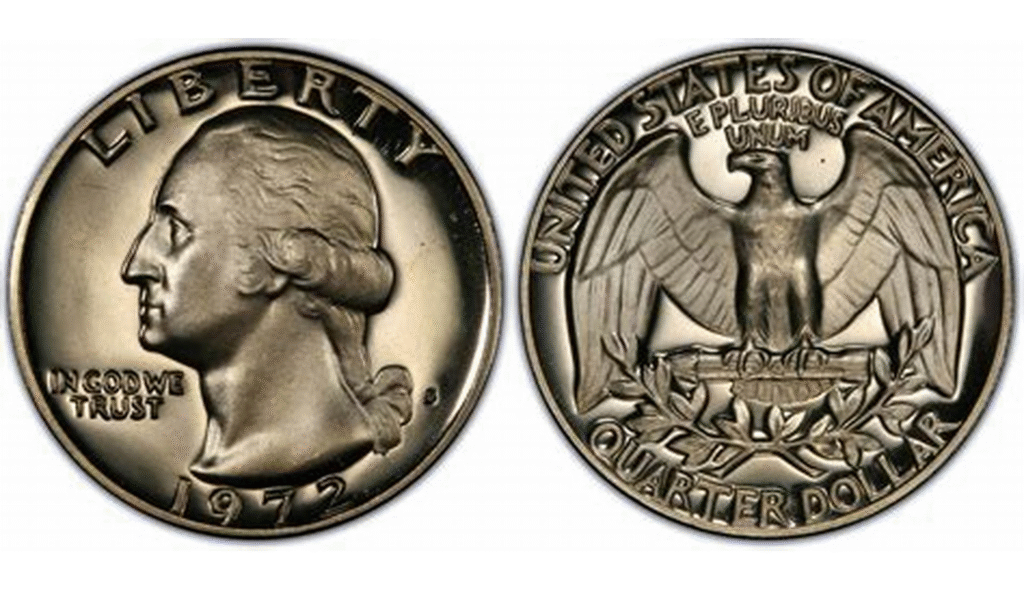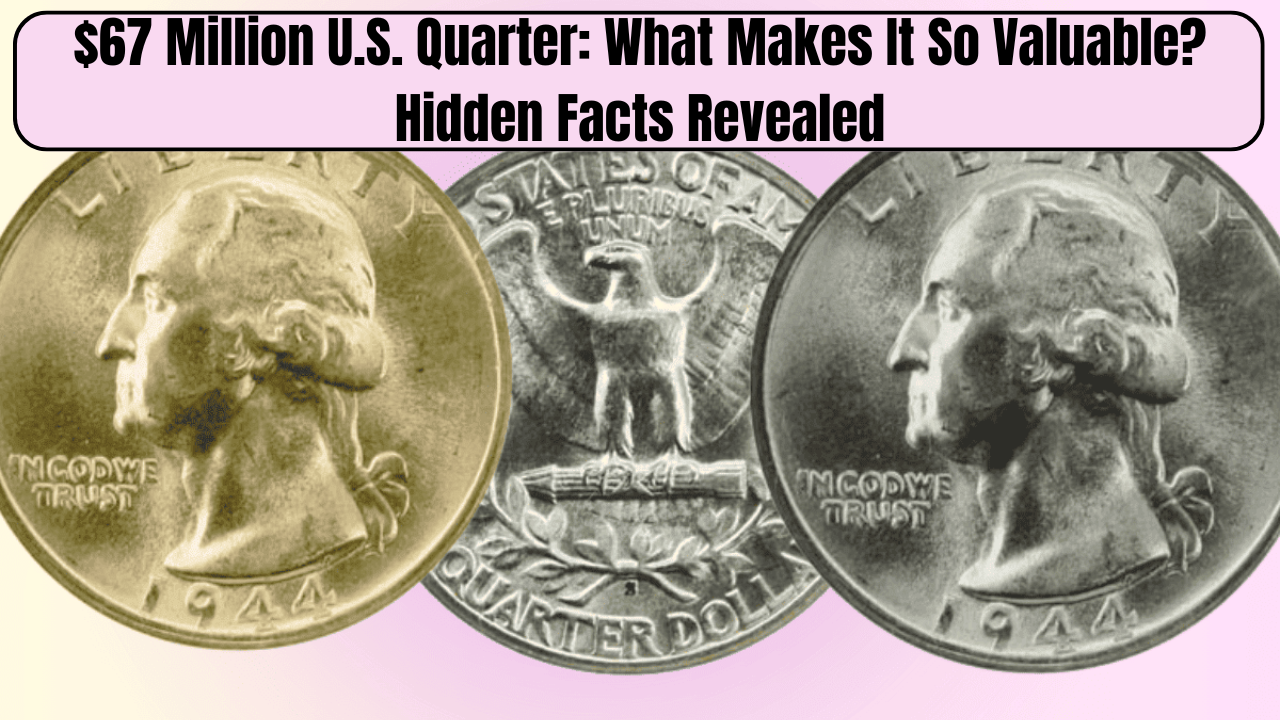$67 Million Quarter: Collecting coins has always been a mesmerizing hobby, converted into old-fashioned potentiality lives changing figure very few would expect in an ordinary quarter. Shot as one of the most expensive coins ever sold, this quarter, which was minted in 1976, is already catching the interest of numismatists and all coin collectors worldwide. It is intended for cash transactions but suddenly became one of the most valuable relics worth millions of dollars for a broken combination of rare attributes.
What makes this particular quarter so special? The answer lies in the fact that it has a minting error hardly found, in excellent condition, and has a remarkable historical background. Billions were stamped as Bicentennial Quarters, but only a few are perceived with those kinds of qualities and are thus treasured for those things. We will explore in this piece the hidden factors behind this coin’s extravagant worth, how grading plays into it, and how you could initiate your personal coin-collection journey.
Why have a reason for such an unbelievable amount tagged onto it? It needs a deeper dive into real values.
Overview of the $67 Million Quarter
| Key Feature | Details |
| Auction Price | $67 million |
| Year of Issue | 1976 |
| Minting Error | Off-center strike, doubling effect |
| Grade | Mint State 69 (MS69) |
| Historical Significance | Commemorative Bicentennial design |
| Why It’s Valuable | Rare error, pristine condition, high demand |
The Unique Story Behind the $67 Million Quarter
What Made the Bicentennial Quarter So Special?
The Bicentennial Quarter was part of the national celebration in 1975 and 1976 to mark the 200th anniversary of the United States. Unlike regular quarters that have the eagle on the reverse, this coin had the colonial drummer on the reverse side, representing the spirit of the revolutionary war. The dual date 1776-1976 emphasized its commemorative nature, making it distinct from other coins in circulation.

Generally, most of the produced Bicentennial Quarters are worth only face value. However, a few of them, particularly those with errors or unique characteristics, have become highly valued.
What Makes This Quarter So Valuable?
1. Minting Error – Rarely Occurring
One of the most significant factors bringing this $67 million quarter into this remarkable price is the minting error. Coin error actually is a specific issuing failure in the design striking process, and in this case, this quarter was struck slightly off-center, which resulted in a created appearance.
Also, several quarters even show the effect of doubling, where pieces of the picture appear to be slightly displaced or doubled. Such errors are quite rare; thus, such coins will be highly sought after by willing collectors of one-of-a-kind pieces.
2. Impeccable Condition – Nearly Perfect Grade
In value attribution for coins, condition is among the most significant factors. In fact, this $67 million quarter was graded by those professional sources of coin grading, Mint State 69 (MS69); thus, the coin is nearly perfect just to have a microscope discover the flaws in it.
Since most quarters would have passed through too many people’s hands, it is hard to find such a fine example as this. A coin’s surface must remain free from scratches, otherwise it loses much of its grade; similarly, wear and color discoloration do. Even a slight imperfection has been enough for very large devaluation.

3. Historical and Collectible Significance
As a commemorative coin, the Bicentennial Quarter has its historical significance. The design depicts a colonial drummer surrounded by 13 stars, symbolizing the original colonies and the struggle for independence.
Collectors do appreciate coins commemorating important historical events. This quarter also has a good deal of monetary worth as a pertinent aspect of American history, and hence, it has become even more desirable.
4. Rarity and Collector Demand
The supply and demand rule profoundly determines the worth of a rare coin. By virtue of being such an honorary coin, few Bicentennial Quarters were minted with those very particular errors and impressive conditions.
When an item of relatively high value becomes put to sale, the well-heeled would bid far and beyond for it to become its next owner. Hence, it became a record attainability sale for this quarter, born out of its extreme rarity, including the unique minting error, and perfect condition.
Understanding Coin Grading and Value
How Coins Are Graded
Coins are graded on the condition of their surface, rarity, and exhibition quality. The most accepted grading system is the Sheldon Scale, which runs to 70:
- Poor (1-10) – Heavy wear, just recognizable.
- Fine (20-40) – Observably worn but some design elements visible.
- Extremely Fine (45-58) – Details are well defined but show some circulation.
- Mint State (60-70) – No wear whatsoever; the higher the number, the better-preserved one.

Compared to a quarter that sold for $67 million, a coin graded MS69 has almost no imperfections in its desirability from an investor standpoint.
Factors Affecting a Coin’s Value
- Rarity – The lesser the number of coins available, the greater the demand.
- Condition – The better the state of the coin and higher the grade, the better its value.
- Minting Errors- Special design flaws make some coins much more valuable.
- Historical Significance – Coins that are somehow associated with an important event grab more interest.
- Market Demand- Interest among collectors and competitiveness in auctions vary prices.
How to Start Your Own Coin Collection
- Learn About Coins and Their Value
To be a successful collector, the first thing to do is research different coins, the minting process, and grading standards. Online resources can help—books and of course, coin collecting communities. - Search for Collectible Coins in General Circulation
Rare coins sit idly in common change. Check for minting errors, special issues, and old coins. Any of these will greatly benefit your collection. - Secure Proper Storage and Handling
Coin value preservation requires protective cases and albums for storage. Handling must be avoided with open hands, since natural oil from our hands may ruin the coin in a long time. - Buy from Reputable Sources
When acquiring coins, be certain that they come from certified dealers, auctions, or grading services to help in authenticating. Enterprises for grading such as PCGS and NGC shall get the trust of buyers by issuing certificates safeguarding against counterfeits. - Go for Coin Appraisal
If you think any of your coins happen to be valuable, getting a professional numismatist to appraise it shall elucidate its value.
FAQs:
What makes the $67 million quarter so valuable?
Its value comes from extreme rarity, minting errors, historical significance, and collector demand—making it one of the most sought-after coins in history.
How can I identify the $67 million quarter?
Look for unique minting errors, such as a double die or wrong metal composition, and verify authenticity through a certified coin grading service.
Is the $67 million quarter still in circulation today?
While unlikely, rare coins like this sometimes remain unnoticed in collections or pocket change, making it possible—though extremely rare—to find one in circulation.
